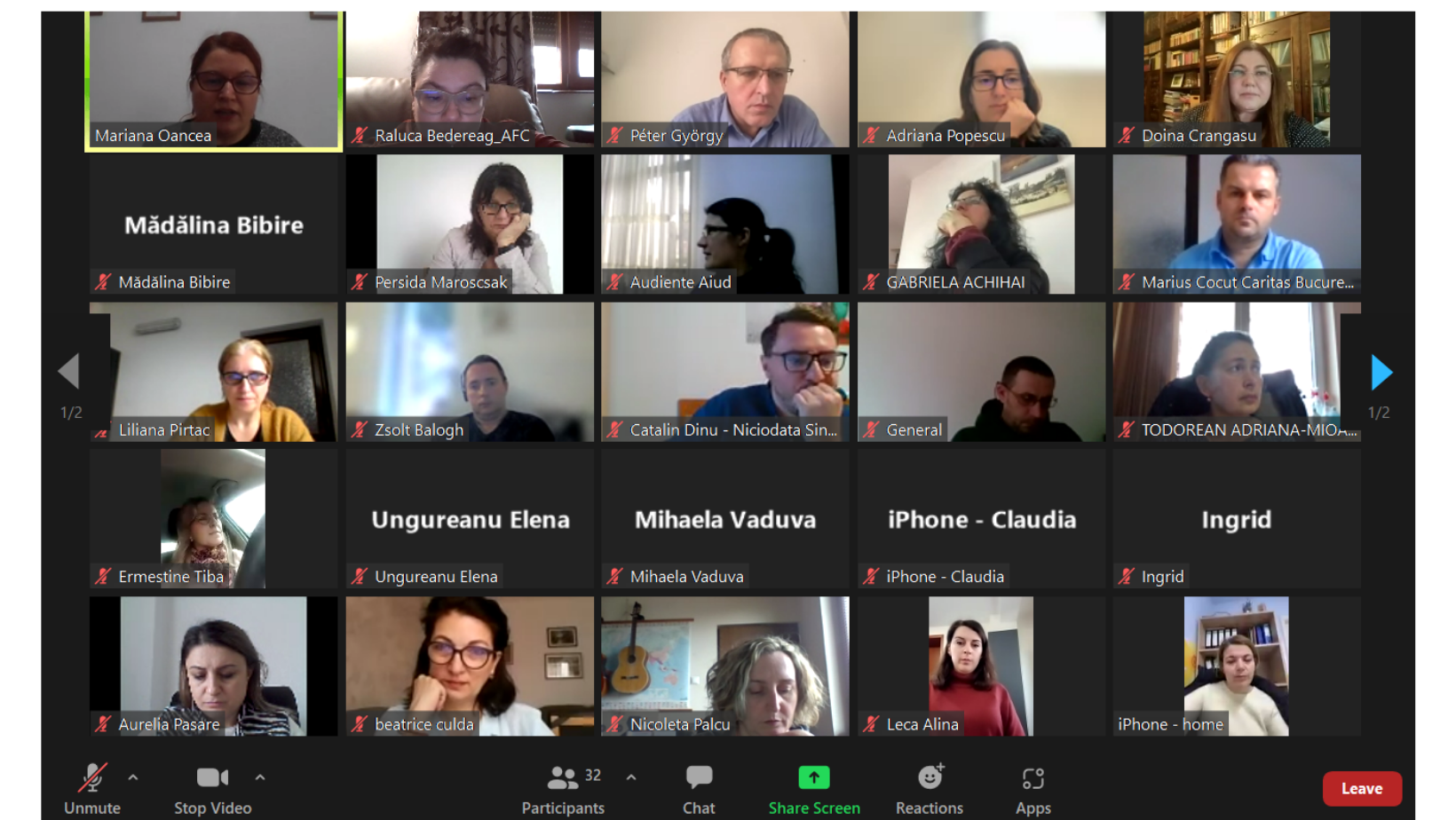SenioriNET’s Strategy and the upcoming formalization of the Federation
On Wednesday 23 February, a meeting between the Network members and the new Board of the future Federation took place.
Within the event, progress made since June 2021 to date was discussed.
The Board members were introduced, each of them sharing their thoughts and vision for the Federation’s future.
That moment there we realized how lucky we are to be able to work as a team for the Federation’s benefit. We will definetly take advantage of their knowhow and years of serving the interests of the elderly.
The Board members are as follows:
– Péter György (Caritas Alba Iulia) – President
– Aurelia Pasăre (Asociația Four Change) – Vicepresident
– Gabriela Achihăi (Fundația de Sprijin Comunitar Bacău) – Member
– Cătălin Dinu (Niciodată singur – prietenii vârstnicilor) – Member
– Ioan Suru (ADAM Slatina Timiș) – Member
Discussions were held on the two main documents previously sent to members – the Strategic Plan 2022 – 2026 and the Operational Plan 2022 – 2023.
In this context, the strategic goals of the Federation have been resumed:
1: Strengthen the Federation and increase the organizational capacity of its members to ensure the sustainability of social and health services for seniors.
2. Resource centre for research and analysis of the situation of services for elderly in order to base proposals for improving public policies.
3. Advocacy in order to put the issue of older people in Romania on the public agenda as a priority for systemic change.
4. Increasing public information and awareness at national and European level on the role of member organizations in defending and promoting the rights of older people in Romania.
The useful and necessary documents for acquiring the legal personality of the SenioriNET Federation were also reviewed.
Among the issues raised by members for the Federation to address, the most frequently mentioned were: the lack of coherent policies regarding the development of services for the elderly and ensuring continuity of service provision and also the difficulty in accessing funding to cover the costs of services or the absence of funding lines for services for the elderly – leading to financial instability and fluctuation of human resources.

